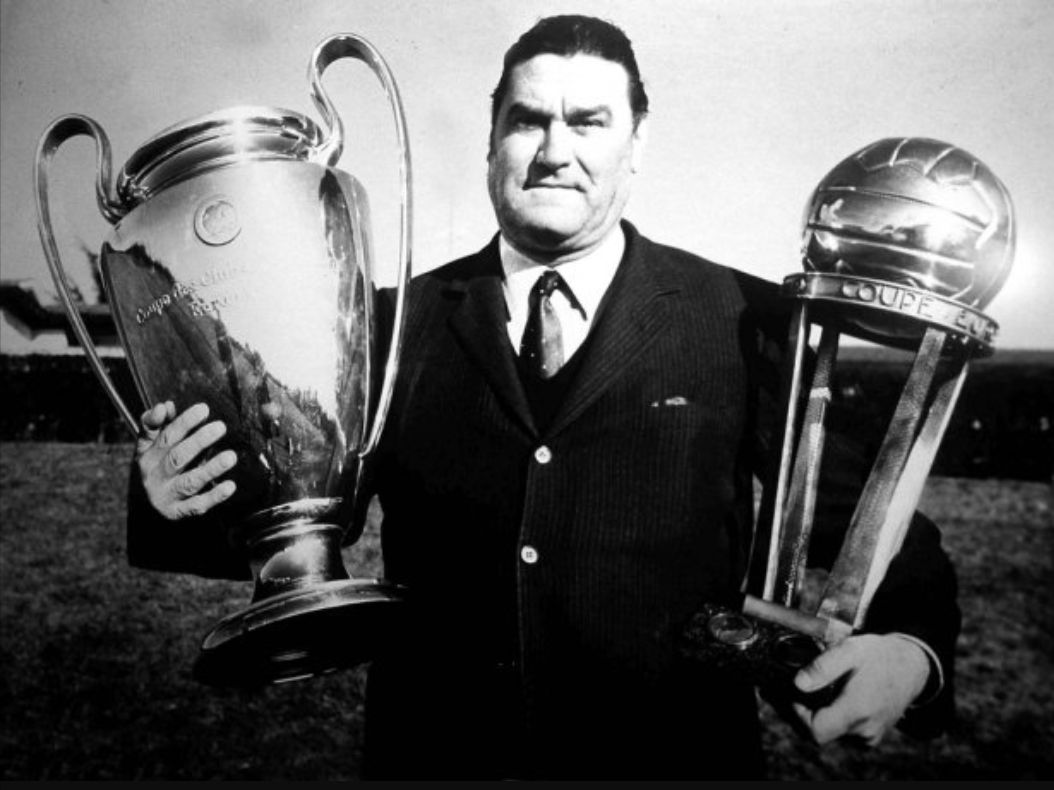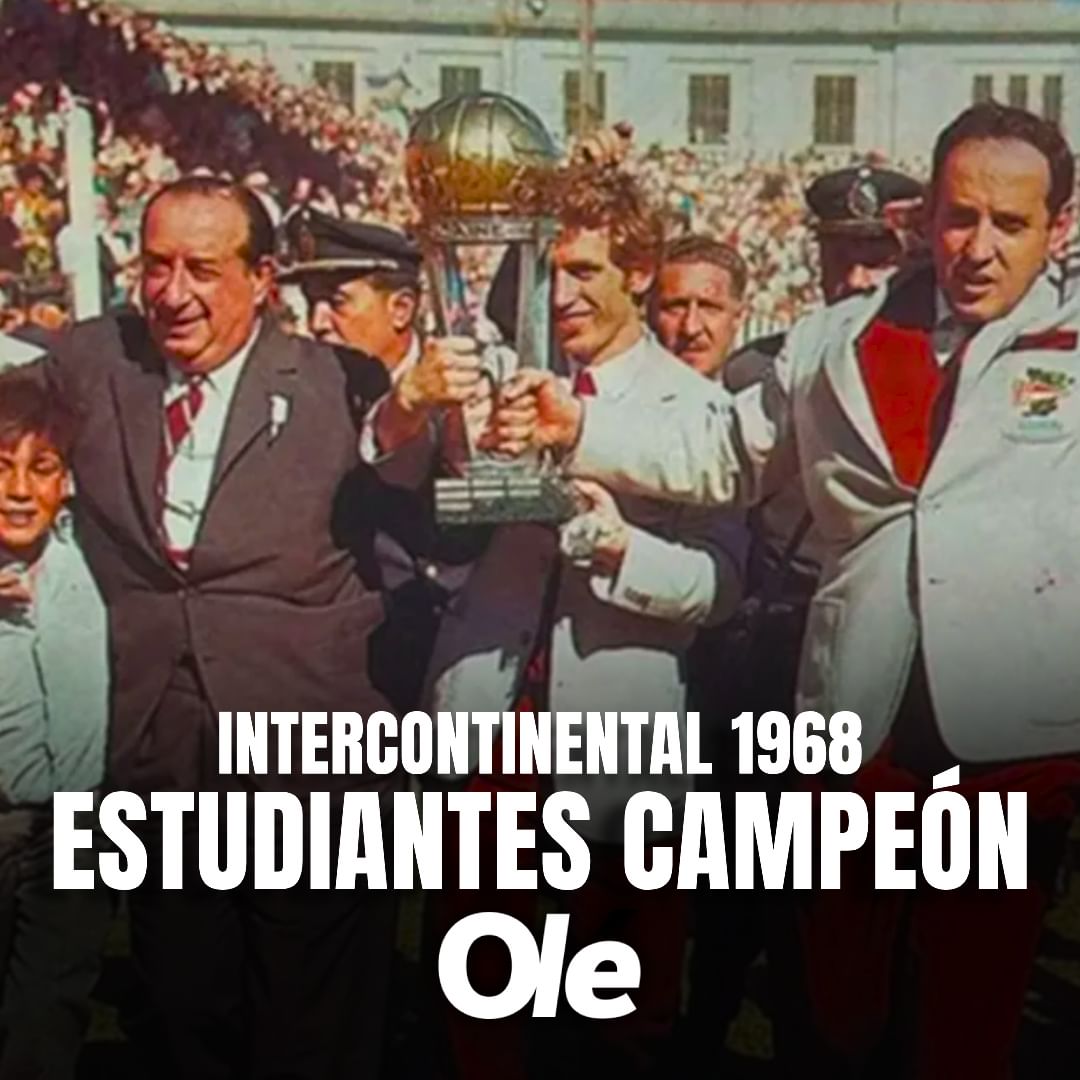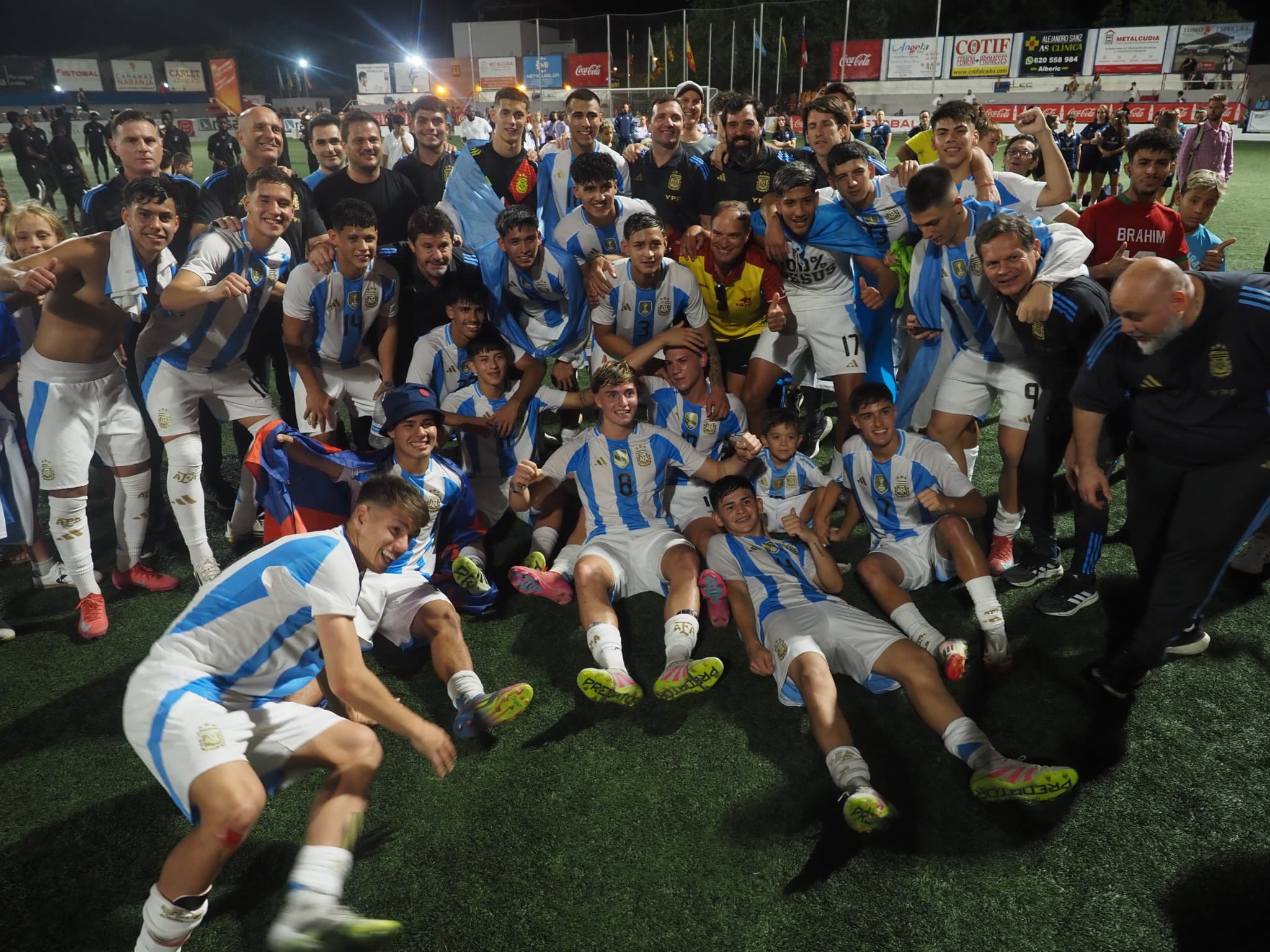[Source](https://x.com/nerazzurriSoci_/status/1778112200126652579/photo/1)
El título de este artículo hace mención a la traducción del idioma italiano al español de la palabra "catenaccio" y como aquí hablamos de deportes debo mencionar rápidamente y para no aburrirles que con ese nombre se conoció en la década de 1950 un esquema de juego ultradefensivo que idearon e implementaron algunos grandes directores técnicos de aquel país, entre ellos y como estandartes principales Helenio Herrera y Nereo Rocco, responsables técnicos del Inter de Milán y su rival del barrio AC Milán respectivamente.
Para ser honestos, Helenio Herrera no era italiano sino argentino quien emigró en su infancia a Marruecos donde inició su carrera como futbolista para luego dedicarse a la dirección técnica de equipos de fútbol. Continuando con esta línea de honestidad, debo mencionar que esta forma de jugar al fútbol no es nativa de la península itálica sino de Suiza donde nació en la década de 1930 bajo una idea original del entrenador Karl Rappan. Nereo Rocco, este tampoco italiano ya que había nacido en Trieste cuando esa región era parte del imperio Austro-Hungaro, fue el primero en llevar el sistema a Italia.
El "catenaccio" es un esquema de juego al que podemos denominar como ultradefensivo que se basa en una defensa muy cerrada con una línea de 4 o 5 defensores y un líbero o stopper circulando suelto por detrás de la misma como último recurso ante errores propios o por mejor performance del equipo rival. Otra característica definida es la salida en contraataque rápido y con pocos toques para aprovechar el adelantamiento del equipo rival. Básicamente esas eran las reglas principales y la prioridad absoluta era no recibir goles en su propia valla.

[Source](https://x.com/CoeurRossonero/status/1924760618143281475/photo/1)
Este esquema, mezquino por cierto respecto al espectáculo, tuvo grandes resultados en las décadas de 1960 y 70 donde el Inter de Milán conquistó la copa de Europa en 1964 y 1965, y también la Intercontinental en esos mismos años, el AC Milan por su parte con Rocco a la cabeza conquistó la Recopa de Europa en 1967, la Copa de Europa en 1968 y la Intercontinental en 1969. Esos logros llevaron a la selección italiana a adoptar el esquema que fue muy exitoso y permaneció durante muchos años, curiosamente, ambos entrenadores tuvieron pasos muy breves al frente de la Azzurra y ninguno de ellos logró buenos resultados. Aquí en mi país, el esquema de juego fue copiado por Estudiantes de la Plata obteniendo excelentes resultados.
Todo esto viene a cuento de que recuerdo algo de los resultados que se daban en la Serie A más cerca del nuevo siglo y cuando todavía muchos equipos utilizaban ese esquema de las defensas extremadamente cerradas, difícilmente un encuentro de cualquier fecha tuviera varios goles, predominaban los empates y las victorias por la mínima diferencia, lo comparaba por aquel entonces con el fútbol que se practicaba en mi país y me parecía un mal sueño observar los pocos goles que se convertían allá contra los muchos de aquí, están matando el fútbol pensaba.

[Source](https://x.com/DiarioOle/status/1846525144837083304/photo/1)
Jamás imaginé que volvería a vivir esa sensación.
Este fin de semana finalizó la tercera fecha de nuestro campeonato local y para no andar con rodeos a continuación hago un recuento de los resultados:
Sarmiento 0 Lanús 2
Independiente Rivadavia 0 Belgrano de Córdoba 0
Unión de Santa Fe 0 Tigre 0
Aldosivi de Mar del Plata 0 Newell's Old Boys de Rosario 0
Rosario Central 0 San Martín de San Juan 0
Platense 0 argentinos juniors 0
Velez Sarsfield 0 Instituto de Córdoba 0
Racing Club 0 Estudiantes de la Plata 1
Gimnasia de la Plata 1 Independiente 0
Talleres de Córdoba 0 Godoy Cruz de Mendoza 0
Huracán 1 Boca Juniors 0
River Plate 0 San Lorenzo de Almagro 0
Deportivo Riestra 1 Atlético Tucumán 0
Central Córdoba de Santiago del Estero 2 Defensa y Justicia 1
Banfield 1 Barracas Central 3.
13 goles en 15 partidos, 8 partidos finalizados sin abrir el marcador, definitivamente en la Argentina estamos inaugurando una nueva etapa del catenaccio, esperemos que esta infección solo sea localizada y no se contagie a otros lugares porque moriremos de aburrimiento.

___________________________________________________________
_________________________________________________________
[Source](https://x.com/olimpia_argenta/status/1950692940524958073/photo/3)
Para nuestra suerte parece que las selecciones nacionales de este deporte por ahora son inmunes a esa peste, en el dia de ayer la selección sub-20 obtuvo el importante Torneo COTIF L'Alcudia 2025 y la mejor noticia es que el conjunto local llevó a todos sus jugadores sub-17 como preparación para el mundial de esa categoría que se jugará en Qatar en noviembre próximo.
The bolt
The title of this article refers to the translation from Italian to Spanish of the word "catenaccio" and since we are talking about sports here I must quickly mention, so as not to bore you, that this name was used in the 1950s to describe an ultra-defensive playing style that was devised and implemented by some of the great coaches of that country, including, and as main figures, Helenio Herrera and Nereo Rocco, coaches of Inter Milan and its neighborhood rival AC Milan respectively.
To be honest, Helenio Herrera wasn't Italian but Argentine, who emigrated to Morocco as a child, where he began his career as a soccer player and later dedicated himself to coaching soccer teams. Continuing with this line of honesty, I must mention that this style of playing soccer isn't native to the Italian peninsula but to Switzerland, where it originated in the 1930s under the brainchild of coach Karl Rappan. Nereo Rocco, also not Italian, having been born in Trieste when that region was part of the Austro-Hungarian Empire, was the first to bring the system to Italy.
"Catenaccio" is a playing style that we might call ultra-defensive, based on a very tight defense with a line of four or five defenders and a libero or stopper running loose behind it as a last resort in the event of one's own mistakes or due to a better performance by the opposing team. Another defining characteristic is the quick counterattack with few touches to take advantage of the opposing team's advance. These were the main rules, and the absolute priority was not to concede goals in one's net.
This system, admittedly petty in terms of spectacle, had great results in the 1960s and 1970s, when Inter Milan won the European Cup in 1964 and 1965, and also the Intercontinental Cup in those same years. AC Milan, with Rocco at the helm, won the European Cup Winners' Cup in 1967, the European Cup in 1968, and the Intercontinental Cup in 1969. These achievements led the Italian national team to adopt the system, which was very successful and remained in place for many years. Curiously, both coaches had very brief stints at the helm of the Azzurri, and neither achieved good results. Here in my country, the playing system was copied by Estudiantes de la Plata, obtaining excellent results.
All this comes to mind because I remember some of the results we were seeing in Serie A closer to the turn of the century, when many teams still used that extremely tight defensive system. It was rare for a match on any given day to have multiple goals, with draws and narrow wins predominating. I compared it back then to the football played in my country, and it seemed like a nightmare to watch the few goals scored there against the many here. They're killing football, I thought.
I never imagined I'd experience that feeling again.
This weekend, the third round of our local championship concluded, and to cut to the chase, here's a rundown of the results:
Sarmiento 0 Lanús 2
Independiente Rivadavia 0 Belgrano de Córdoba 0
Unión de Santa Fe 0 Tigre 0
Aldosivi de Mar del Plata 0 Newell's Old Boys of Rosario 0
Rosario Central 0 San Martín de San Juan 0
Platense 0 Argentinian Juniors 0
Velez Sarsfield 0 Instituto de Córdoba 0
Racing Club 0 Estudiantes de la Plata 1
Gimnasia de la Plata 1 Independiente 0
Talleres de Córdoba 0 Godoy Cruz de Mendoza 0
Huracán 1 Boca Juniors 0
River Plate 0 San Lorenzo de Almagro 0
Deportivo Riestra 1 Atlético Tucumán 0
Central Córdoba de Santiago del Estero 2 Defensa y Justicia 1
Banfield 1 Barracas Central 3.
13 goals in 15 matches, 8 matches finished without opening the scoring. In Argentina, we are inaugurating a new era of catenaccio. Let's hope this infection is only localized and doesn't spread to other places, because we'll die of boredom.
Luckily for us, it seems that the national teams in this sport are immune to this plague for now. Yesterday, the U-20 team won the important COTIF L'Alcudia 2025 Tournament, and the best news is that the local team brought all of its U-17 players in preparation for the U-17 World Cup, which will be played in Qatar next November.
Héctor Gugliermo
@hosgug
#spanish
#deportes
#sports
#futbol
#soccer
#pob
#dclub
#fun
#creativecoin
#argentina
Payout: 0.000 HBD
Votes: 189
More interactions (upvote, reblog, reply) coming soon.